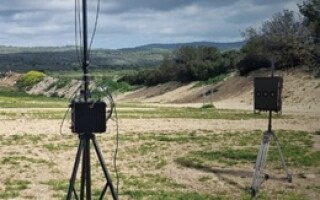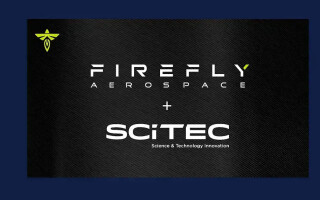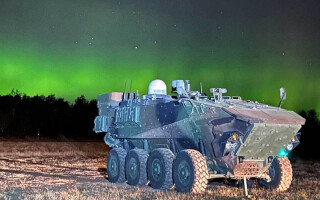Continued support for VPX found in recent hardware and software developments
StoryMarch 08, 2017
VITA's Standards Organization (VSO) has been working diligently to finalize a major update to the VITA 65 standard, also known as OpenVPX. In addition, CERDEC [U.S. Army Communications-Electronics Research, Development and Engineering Center] has been instrumental in supplying some of the additions to the standard. Even broader than these specification updates are additional efforts being made on other VITA standards that strengthen the overall VPX environment itself.
From field-programmable gate arrays (FPGAs) to radio frequency (RF) and optical connectors, faster, more efficient technologies are being incorporated into the fabric of VPX. More and more organizations are becoming involved to ensure interoperability and cohesion among VPX systems and components (Figure 1).
Figure 1: Examples of RF and optical connector interfaces being used by the updated specifications.
The VPX movement continues
The activity level within VITA, and within the VPX ecosystem itself, has been intensely busy over the past year, with both VITA 65.0 and VITA 65.1 being on the cusp of ANSI balloting. The most recent working group ballots for these two documents ended on February 28th, and solicitation for an ANSI ballot group ended on March 2nd.
A tremendous amount of effort has gone into what will be the third release of VITA 65, and there have been many significant additions since the document was last updated in 2012. Even though all the charts associated with module and backplane dash numbers have been moved into newly created VITA 65.1, the base document is still expanding by more than 40 percent, to a massive 800 pages.
Working in tandem with the balloting of the VITA 65 updates are other related efforts, which are nearing completion as well:
- VITA 46.9, which defines rear I/O PMC/XMC mapping on VPX modules, recently completed a working group ballot and is expected to go to ANSI ballot soon.
- VITA 57.4 FMC+, being led by Samtec and Xilinx, involves a higher-speed FPGA mezzanine that will support data rates in excess of 28 Gb/s between a base card and the FMC mezzanine. This standard will allow the newest FPGA devices to enhance the performance of 3U and 6U VPX modules by allowing the support of additional features as required.
- VITA 67.3, a new standard, is both flexible and far-reaching, defining a detailed connector format that enables the development of far more complex VPX RF modules. Optical modules have already been produced that use the newly defined VITA 67.3 backplane apertures as well as a combined RF and optical module in accordance with VITA 67.3.
VPX provides much higher data rates to the robust Eurocard form factor. Optical interfaces will allow continued support of even higher speeds, while RF interfaces bring radio and radar antenna connections directly to the backplane. VPX integrated switches are already available to handle both data and control plane communication. Compatibility with existing XMC mezzanines, as well as the new faster FMC mezzanine standard, give VPX the flexibility to meet every challenge.
Support throughout military environments
With roots in the long-used military technology VME platform, VPX modules are being developed to support communications, surveillance, electronic warfare, and many other types of defense applications, especially for vehicles. It seems clear today that all three military services have concluded that the VPX architecture is critical to the future development of their electronic hardware. Further evidence of this expanding adoption is the Air Force’s support of VITA 78 for aerospace applications.
Additionally, the Office of Naval Research’s support of a 3U 12-slot VPX convergence backplane – and a similar effort within the Army CERDEC command for its own 3U 12-slot convergence backplane – are very visible efforts that have resulted in new standard VPX development backplanes that are part of the new VITA 65.0 release (Figure 2).
Figure 2: New backplane topologies, with diagrams.
Power in numbers
Currently, there are at least 44 different companies producing VPX modules for the open market and at least six connector companies that make various connector modules used in VPX products (Figure 3). There are also many larger suppliers building special VPX modules for their own customer programs.
Figure 3: Example of a FPGA mezzanine card (FMC) using the latest connector modules and VPX standards.
Massive software initiatives supporting the hardware development are augmenting both the Army and Navy efforts, although these actions are far less visible. For example, the Navy is heavily committed to extending the capability of VITA 49 (VITA Radio Transport). This standard will allow a common control interface that defines the management of RF waveforms and packetized data necessary to support multiple software radio modules and other electronic warfare hardware that is being built in accordance with the VPX architecture.
These software and hardware developments within the Army and Navy have required new clocking and timing architectures to be developed with VPX that have been done in a very clever fashion. The new architectures allow some “Ref_Clk” and “Aux_Clk” signals to be driven either as traditional bused multi-drop signals and other modules to receive their “Ref_Clk” and “Aux_Clk” signals radially within the same backplane.
Continued strides toward interoperability
Another major effort focused on making VPX hardware more interoperable and more manageable for defense applications is being driven by NAVAIR [U.S. Naval Air Systems Command], but being done mostly outside of the VSO. A VITA 84 study group serves as a Q&A forum for the NAVAIR engineers and their contractors, who are independently developing a multitiered hardware open systems technology (HOST) document. This document will draw heavily on the VITA 46.11 standard for VPX system management. The HOST effort is intended to reduce some flexibility of key modules to improve interoperability and interchangeability of VPX modules.
VPX, with its high degree of flexibility, has made it increasingly difficult for the end customer to ensure that multiple vendors will have interchangeable modules with respect to a given backplane slot. The development of both hardware and software test fixtures is a particularly interesting aspect of the HOST effort.
That the HOST effort is taking place outside of the VITA Standards Organization is ideal because NAVAIR would like to enforce common design approaches that will require a level of cooperation that might otherwise have been resisted if individual vendors were left to their own devices. The HOST specification is also being followed closely by the Army CERDEC team. Until now, VPX system management has seen less than favorable adoption, but the HOST standard is on track to make the broad benefits of VPX system management a reality.
Next on the horizon
There are many significant key standards and specifications responsible for driving VPX today. With more than 47 separate VITA standards addressing various aspects of the VPX architecture – as well as a number of other external specifications such as HOST, MORA, and Victory – also supporting VPX system development, there is obviously continued development and interest in building out the ecosystem.
The VPX architecture is already 10 years old, but with all the new features added in the past 24 months, it would be fair to say that this architecture is still in its infancy. As more vendors implement the newest optical and RF technologies and HOST management is rolled out, military and aerospace applications of VPX will only continue to grow.
Michael Munroe is the technical specialist for Elma Electronic. He is a significant contributor to open standards committees, including PICMG, VITA, and OpenVPX. He serves on the technical committee for VITA 65 and is the secretary-treasurer of PICMG.
Elma Electronic • www.elma.com









